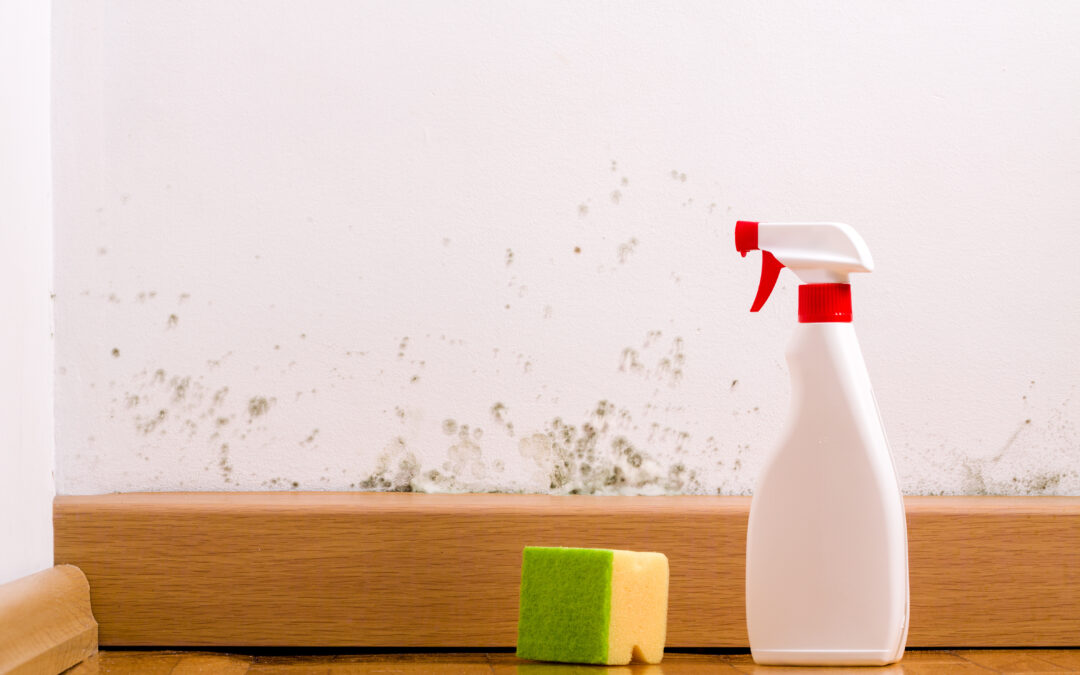That persistent cough. The unexplained eczema. The strange fatigue that improves when you’re on vacation but creeps back in when you’re back home. The sinus infection that keeps coming back. The asthma that suddenly seems worse than ever before. What if I told you that the source of these stubborn respiratory issues might be hiding in plain sight in your home or workplace?
I’m talking about mould—and its profound impact on respiratory health.
Whether you’re a patient struggling with unexplained symptoms or a practitioner working with complex cases, understanding the relationship between mould exposure and airway health could be the missing piece in your puzzle.
Beyond the Visible: Mould’s Silent Impact
Mould isn’t just an unsightly stain on your bathroom ceiling or basement wall. It’s a living organism that releases spores and mycotoxins into the air—invisible particles that can wreak havoc on your respiratory system when inhaled.
What makes this particularly challenging is that you don’t need visible mould to experience its effects. Hidden mould behind walls, under flooring, or in ventilation systems can still release spores into your breathing space without any obvious signs.
For practitioners, this means that patients may be experiencing mould-related symptoms without any awareness of exposure. For patients, it means your home might be making you sick—even if it looks perfectly clean.
The Silent Damage: What Happens Deep in Your Airways
Even in the absence of obvious symptoms like coughing or wheezing, mould can cause significant damage to your respiratory system at the microscopic level:
Alveolar Inflammation: Mould spores and fragments can penetrate deep into the lungs, becoming trapped in the alveoli—the tiny air sacs responsible for oxygen exchange. This creates persistent inflammation and oxidative stress that affects not just your lungs, but your entire immune system.
Sinus Biofilm Colonization: Mould can become trapped in biofilm (a protective matrix created by bacteria) within the sinuses. Once established, these colonies can continuously release mycotoxins directly into your system, essentially turning your body into “your own mouldy building”—a constant source of internal toxicity.
Systemic Immune Activation: This ongoing, low-grade inflammation from trapped spores triggers immune responses throughout the body, contributing to symptoms that might seem unrelated to respiratory health—fatigue, cognitive issues, joint pain, and more.
What’s particularly concerning is that these processes can occur without obvious respiratory symptoms, making the connection to mould exposure even harder to identify.
How Mould Affects Your Airways
When mould spores enter your airways, they trigger a series of biological responses that can range from mild irritation to serious health complications. Here’s what happens:
Irritation and Inflammation
The moment mould spores land on the delicate lining of your airways, your body recognizes them as foreign invaders. The immune system responds by triggering inflammation—a protective mechanism that, unfortunately, can cause significant discomfort:
- The lining of your airways becomes swollen and irritated
- Extra mucus is produced to try to trap and expel the spores
- Airways narrow, making breathing more difficult and uncomfortable
For my patients with existing respiratory conditions like asthma, this inflammatory response can be particularly problematic, often triggering flares that seem to come out of nowhere.
Immune System Response
Beyond the immediate irritation, mould exposure activates your immune system, releasing chemicals like histamines throughout your body. This can cause:
- Allergic reactions (sneezing, coughing, wheezing)
- Increased sensitivity to other allergens
- Potential worsening of conditions like asthma
For practitioners, it’s worth noting that this immune activation can sometimes manifest as seemingly unrelated symptoms—fatigue, brain fog, skin issues—making diagnosis challenging without considering environmental factors.
Common Symptoms of Mould-Related Respiratory Issues
The respiratory symptoms associated with mould exposure range from subtle to severe. Here are the most common presentations I see in my practice:
Early Warning Signs
- Persistent coughing: Especially a dry cough that doesn’t seem to resolve with typical treatments
- Wheezing: A high-pitched whistling sound when breathing, caused by narrowed airways
- Shortness of breath: Particularly during physical activity or at night
- Nasal congestion and sinus pressure: Often mistaken for seasonal allergies or recurrent sinus infections
When Exposure Continues
For patients with ongoing exposure, symptoms can progress to include:
- Chronic sinusitis that antibiotics don’t resolve
- Asthma that becomes increasingly difficult to control
- Frequent respiratory infections with slow recovery
- Increased sensitivity to smells, chemicals, and other environmental triggers
The Long-Term Health Risks
What concerns me most as a practitioner is what happens when mould exposure goes unaddressed for months or years. The long-term health risks can be significant:
Chronic Respiratory Conditions
Hypersensitivity Pneumonitis: A serious lung condition where repeated exposure to mould causes inflammation and eventually scarring in the lungs. Symptoms include fever, chills, and a persistent dry cough that can lead to permanent damage and breathing difficulties.
Chronic Rhinosinusitis: Long-term inflammation of the sinuses that becomes resistant to conventional treatments and can significantly impact quality of life.
Fungal Infections
For individuals with weakened immune systems—whether from chronic illness, medical treatments, or other factors—mould exposure can lead to fungal infections like:
Aspergillosis: An infection caused by Aspergillus mould that can start with allergic reactions in the lungs but may become invasive, potentially spreading to other parts of the body.
Other fungal infections: Particularly problematic for immunocompromised individuals, requiring long-term antifungal medications and careful monitoring.
Clinical Pearls for Practitioners
If you’re working with patients who have treatment-resistant respiratory symptoms, consider these indicators of potential mould exposure:
- Symptoms that improve when the patient is away from home or work
- History of water damage, even if minor or “fixed”
- Multiple family members or coworkers with similar symptoms
- Respiratory symptoms alongside unexplained fatigue, cognitive issues, or skin problems
- Poor response to standard treatments for asthma, sinusitis, or allergies
Don’t wait for patients to report visible mould—many aren’t aware of the connection between their environment and their symptoms. Instead, make environmental history a standard part of your intake process.
Important: Even patients without obvious respiratory symptoms may be experiencing the silent effects of mould. Consider mould exposure in cases of unexplained systemic inflammation, immune dysregulation, or neurological symptoms, particularly when conventional treatments have failed.
For Patients: Connecting the Dots
If you’re struggling with persistent respiratory issues or unexplained symptoms, ask yourself:
- Do my symptoms improve when I’m away from home or certain environments?
- Has my home ever had water damage, even minor leaks that were repaired?
- Do I notice a musty smell in certain areas of my home?
- Have my allergies or asthma suddenly become worse without clear reason?
- Am I experiencing seemingly unrelated symptoms like fatigue, brain fog, or joint pain alongside respiratory issues?
These questions can help you determine whether mould might be playing a role in your health challenges.
What Can You Do?
For Patients:
- Pay attention to your environment: Note any signs of dampness, water damage, or musty odors.
- Track your symptoms: Keep a log of when and where your symptoms worsen or improve.
- Consider testing: Home mould testing kits can provide initial insights, though professional inspection is more thorough.
- Seek knowledgeable support: Work with healthcare providers who understand environmental illness and can help you navigate testing and treatment.
- Don’t ignore mild symptoms: Even if you’re not experiencing severe respiratory issues, subtle signs like increased fatigue after being in certain environments could indicate a problem.
For Practitioners:
- Include environmental assessment: Add questions about home and work environments to your intake forms.
- Consider mould in differential diagnosis: Especially for respiratory symptoms that don’t respond to conventional treatment.
- Recommend appropriate testing: Both environmental testing and clinical tests that might indicate mould exposure.
- Address the environment first: Treatment will have limited success if exposure continues.
- Support airway health: Even in patients without obvious respiratory symptoms, supporting airway health should be part of the treatment protocol if mould exposure is suspected.
Final Thoughts
The connection between mould exposure and respiratory health is stronger than many realize. For patients, understanding this link can be the first step toward recovery from chronic symptoms. For practitioners, it can be the key to helping patients who haven’t responded to conventional approaches.
Whether you’re struggling with unexplained respiratory symptoms or treating patients who aren’t improving as expected, consider the possibility that mould might be the hidden culprit. Addressing the environment is often the missing piece that finally allows healing to begin.
Remember—you don’t have to see or smell mould for it to be affecting your health. Even more concerning, mould can continue making you sick years after initial exposure, as mycotoxins and inflammatory responses persist in your body long after you’ve left the contaminated environment.
If you’re a practitioner wondering whether mould might be at the root cause of your patients’ complex symptoms, I’ve created something specifically for you. My comprehensive clinical guide, “Is Hidden Mould Making Your Patients Sick?” provides everything you need to identify, assess, and support patients with mould-related illness.
This detailed primer covers:
- Clinical red flags and when to suspect mould exposure
- The mechanisms of how mould affects multiple body systems
- Practical testing considerations and clinical strategies
- A real case study with common pitfalls to avoid
- A 5-phase recovery framework that actually works
- My approach to supporting mould recovery
This is the same framework I use in my clinical practice and teach inside The Autoimmune Academy. It’s what transforms complex, treatment-resistant cases into success stories.
Don’t let this hidden environmental factor continue affecting your patients’ wellbeing. Sometimes the most significant breakthroughs come from addressing the threats we can’t see.






